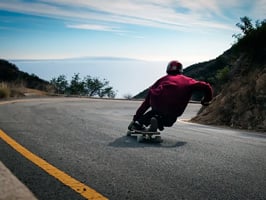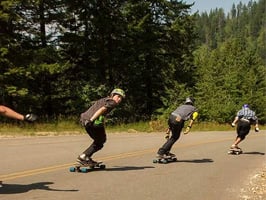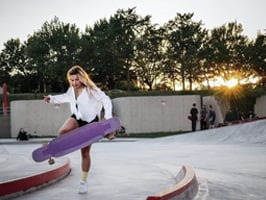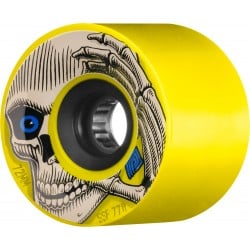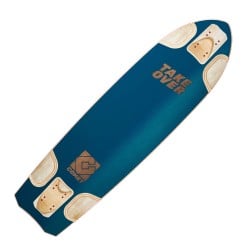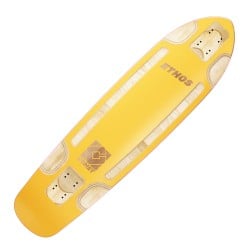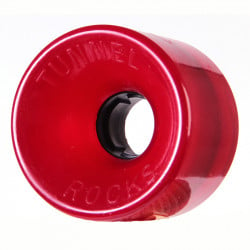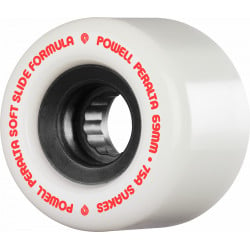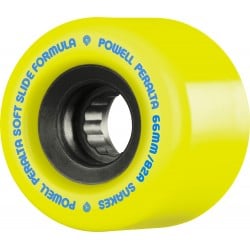-
 Gratis Shirt ab 150€
Gratis Shirt ab 150€
-
 Kostenloses Parken
Kostenloses Parken
-
 Versandkostenfrei ab 75€
Versandkostenfrei ab 75€
-
 100 Tage Widerrufsrecht
100 Tage Widerrufsrecht
-
 Weltweiter Versand
Weltweiter Versand
Tipps für dein neues Longboard/Skateboard von
Sickboards
Art des Decks
Es gibt viele verschiedene Arten von Longboards, vom steifen Downhill-Deck bis hin zum flexiblen Cruiser-Longboard. Im Folgenden gehen wir auf die verschiedenen Formen ein, denn es ist wichtig zu wissen, welches Board du brauchst, bevor du ein Longboard kaufst.
Pintail
Das Pintail ist ein klassisches Shape und ist durch sein ästhetisch/schönes Aussehen immer noch ein beliebtes Board. Allerdings es ist nicht das funktionalste Shape. Aufgrund des kleinen Tails gibt es weniger Platz für den hinteren Fuß. Die Nose ist dabei breiter und es ergibt sich eine asymmetrische Form, dadurch ist „vorne“ und „hinten“ klar definiert. Wer also nochmal zurück fahren will muss sein Brett vorher drehen. Die meisten Pintails gibt es nur als Topmount, das führt dazu, dass der Weg zum Boden länger ist und man mehr Kraft und Energie zum Pushen (Antreten) braucht.
Topmount (kein Kick, einfacher Kick, doppelter Kick)
Mit den Achsen unter dem Board (Topmount), eventuell mit einem Riser, um „Wheel Bite“ (das Schleifen der Rollen am Deck) zu vermeiden, ist die Standfläche höher und das Deck etwas reaktionsfreudiger als bei Drop-Through-Modellen. Deswegen werden diese Boards im Allgemeinen für Downhill, (schnelles) Freeriden und Sliden verwendet werden. Die Kicks* können sowohl beim Sliden als auch bei Ollies eingesetzt werden. Ob du das brauchst oder willst, ist ganz dir überlassen. *Kicks = nur Tail (einfacher Kick) oder auch Nose (doppelter Kick) nach oben gebogen, wie beim Skateboard
Drop through
Drop-Through bedeutet, dass die Achsen durch das Board hindurch montiert sind, dadurch liegt das Board etwas tiefer am Boden und ist leichter zu pushen. Boards, deren Achsen Drop-Through montiert sind, sind in der Regel symmetrisch, d.h. es gibt kein vorne oder hinten. Du kannst einfach auf das Board springen und losfahren, ohne schauen zu müssen wo vorne und hinten ist. Die optimierte Standfläche bietet maximalen Platz für die Füße, so dass du auch Cross-Stepping machen kannst, wenn du willst. Einige Boards, wie z.B. das Loaded Dervish Sama, haben kleine Kicks, mit denen du sogar ein paar Tricks machen kannst. Dieses Board ist ein super. Allrounder und eine gute Wahl für Einsteiger.
Dropped /Double Dropped
Dropped (abgesenkte Standfläche) und Double Dropped (sowohl Drop Through als auch Dropped) haben eine super niedrige Standfläche, ideal zum Pushen. Das vordere Knie muss fast nicht gebeugt werden, also ideal um schnell von A nach B zu fahren. Mit den richtigen Trucks lassen sich auch sehr große Rollen (bis zu 107 mm Durchmesser) montieren, ohne dass man sich um Wheel bite sorgen muss. Diese Boards wurden ursprünglich wegen des niedrigeren Schwerpunkts für Downhill entwickelt, werden aber von der Pushing-Community als ideales Board für Strecken und Transport angesehen.
Dancer
Dancer sind mit - im Schnitt 110cm - die längsten Bretter in der Longboard-Familie. Die Achse ist in der Regel unter dem Brett montiert (Topmount) so, dass das Brett die Rollen etwas überragt und du bei deinen Tricks nicht versehentlich auf die Rollen trittst. Die lange Standfläche ermöglicht dir, dich viel auf dem Brett zu bewegen und zu rotieren (Cross-Stepping, Peter-Pan, Body Varials usw.); und durch seine Länge kannst du das Brett besser greifen, bei einem Trick wie z.B. „Tiger Claw“.
Plastic / Mini Cruiser
Die Mini-Cruiser haben in der Regel die Größe eines Street-Skateboards, sie sind so geformt, dass sie eine ausgeprägte Nose und ein (Kick)Tail haben. In Kombination mit weicheren Rollen und Achsen, die leicht einlenken, ist dieses Board ein idealer Begleiter in der Stadt. Perfekt, wenn man sein Auto irgendwo am Stadtrand parken muss und das letzte Stück nicht zu Fuß gehen will. Die Kunststoff-/Penny-boards sind in der Regel schmaler als ihre hölzernen Cousins, so dass sie eher für Menschen mit kleineren Füßen geeignet sind, sie sind aber trotzdem lustig, um ein wenig zu cruisen.
Flex vs stiff
Ein Flex-Board sorgt für ein sanftes Fahrgefühl, da es viele Vibrationen absorbiert. Wenn du hart carvst, kannst du in der Kurve Energie in das Board stecken, die zurückgegeben wird, wenn du aus der Kurve kommst. Ein steiferes oder härteres Brett gibt mehr Kontrolle und Stabilität, was grade bei hohen Geschwindigkeiten enorm wichtig ist. Natürlich spielt auch das Gewicht des Fahrers eine Rolle. Am Ende ist es aber auch eine persönliche Vorliebe, welcher Härtegrad für dich am besten passt.
Disciplines
Im Longboarding gibt es viele Disziplinen, die alle ihre eigenen Boards und Setups haben:
Downhill/Freeriding
Speeding down the mountain, reaching speeds up to 135km/u. This is generally down on events where there the road is closed from traffic and there are hail bails protecting dangerous obstacles, and an ambulance standing by in case of emergency. Sometimes this is done in a competition (for instance IDF/IGSA or REB/DDF) or just for fun. Well-known events in Europe are Wallonhill, KnK, Belajoy ride (for all events check out freerides.org). When downhill skating the object is to be down the fastest, freeriding is more doing fun pack runs and big (standup) slides.
Downhill boards are preferably mounted with precision trucks, generally with a lower than the standard 50-degree baseplate, sometimes with a split angle setup (a lower angled for the rear truck to increase stability at higher speeds). The wheels are soft (mostly 76A-80A), square-lipped wheels with a diameter around 75mm for a high top speed and tonnes of grip in the corners. Last but not least high-quality bearings as these can become very hot due to the fast spinning wheels, and if they become too hot they can explode or melt the core of the wheel.
Dancing/Freestyle
Dancing is quite popular in flat countries because that is the ideal surface to practice the tricks, while the dancing originates from longboard surfing, has freestyle its roots in street skating. The combination of the two creates a beautiful blend of gracious and technical trick and routines.
Boards are anywhere between 100 and 160cm long, with nice big kicks. All parts of the equipment can suffer quite a bit from the impacts (especially when doing freestyle tricks), so it needs to be strong enough to withstand a beating. Forged trucks are stronger than normal (cast) trucks and will remain straight, in combination with soft bushings which allow for easy turning and fast rail to rail action.
Cruising
Skating is better than walking, so if you want a board that is easy to use, chill to ride go for a flex drop-through board with nice big (around 70-75mm) soft (around 80a) wheels. You can skate over most surfaces, whether is it asphalt or tiles, and the occasional twig, smooth cruising. If you need a board the is easy to carry you might consider a landyachtzDignhy or sorts.
Carving / Surfskate
If you are looking for that surfy feeling when there are no waves, the Carvers are the board of choice. With their specially designed trucks, they can deliver the ultimate surf the streets feel. The front truck has a lot of steering capabilities allowing you to propel yourselves forward with a pumping/carving motion, but you can also mimic bottom turns and snappy cutbacks or floaters. A must-have for any surfer.
Sliding
The art of going sideways. Whereas in snowboarding sliding is the first thing you will learn, in longboarding it is something for the more advanced skater. It is advisable to wear proper protection when practicing this (slide gloves, helmet, knee, and elbow pads). Basically there are two types of sliding, hands down, here you reduce the pressure on and the grip of the wheels by putting your hand(s) on the road when initiating the slide. This is generally seen as the easiest way to slide because is it not scary and if you fall you won't fall too hard (in most cases). The other method is stand-up sliding, similar to snowboarding), where you initiate a carve and let the wheels break traction.
Most people use a medium sided board, top-mount, with slide wheels. Harder (>85a) wheels used to be the go-to wheel, but with the advances of the urethane, softer wheels (around 80a) are now more popular. The reason being is that they provide more control during the slide, and some leave nice thane lines when sliding. Good beginner wheels don't thane too much because the downside of thaning wheels is that they tend to flatspot way easier. Once you master your slides you can go for a more thanier wheel.
LPD
Long Distance Pushing / Pumping, covering great distances on your board. Although the goal and acronym are the same the boards can be quite different. Pushers are generally (double) dropped boards, low to the ground and big fast wheels (like the Speed Vents, Flywheels or Kegels). The trucks are most often TKP (traditional kingpin/indy style) trucks. Pumping can be done either on a top mount board with a pump set up or on a special LDP board like a G-Bomb with brackets, which can be used for both pushing and pumping.
Slalom
The object of the games is to maneuver through the cones as fast as possible without hitting them. Special stiff boards with super agile trucks provide the ability to change the direction swiftly and gain speed by pumping. Generally done on a slightly sloped course with a start ramp. Professional Slalom skaters are members of the ISSA
Luge / Buttboarding
Not really longboarding, but closely related. Originated from people laying down on their skateboard, it grew into two disciplines. Classic Luge / Buttboarding in which you have a wooden deck, 2 trucks, 4 wheels and no support for your feet and street luge often made of metal, where you can have 2,3 or 4 trucks support for your feet if desired. Generally, the street luges go a bit faster than classic luge but have a higher price tag.

